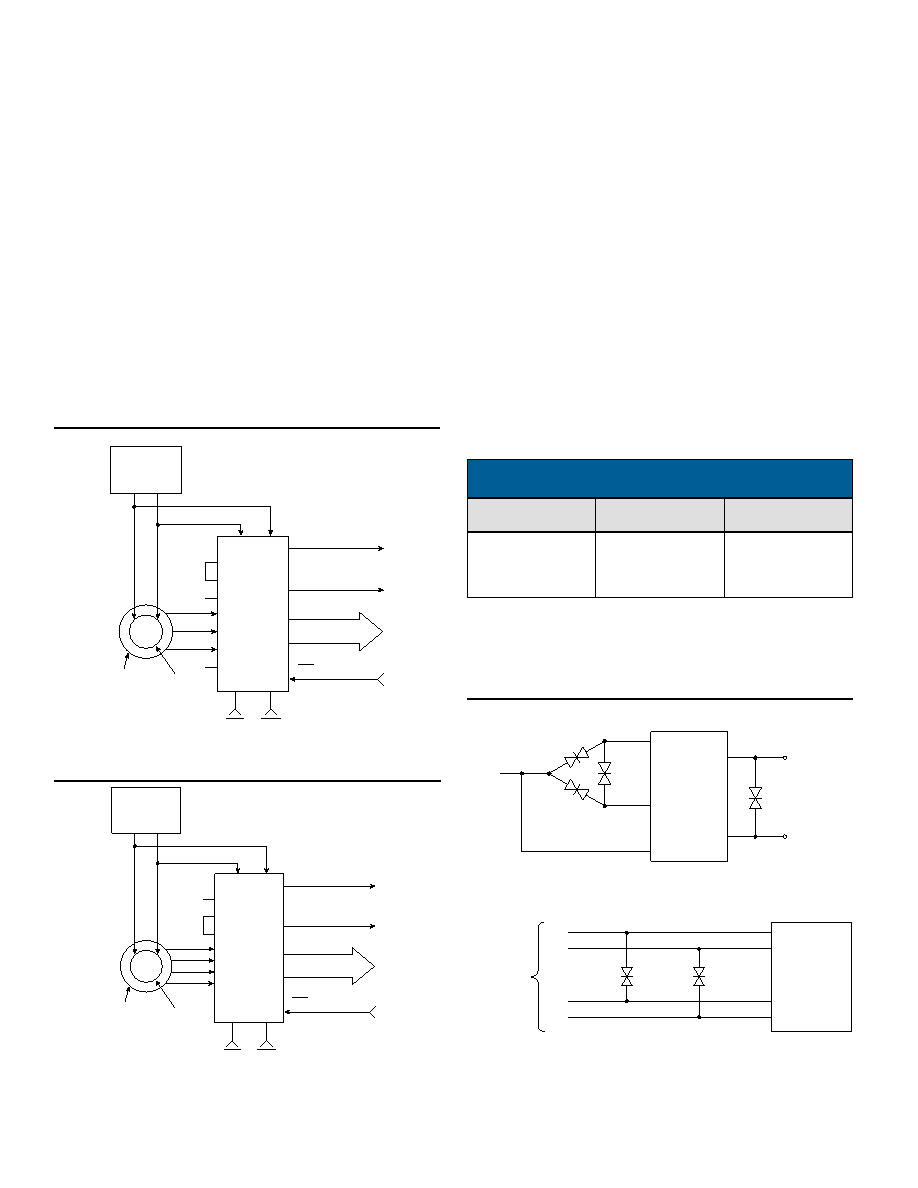- 您現(xiàn)在的位置:買賣IC網(wǎng) > PDF目錄192366 > SD-14531D3-224S (DATA DEVICE CORP) SYNCHRO OR RESOLVER TO DIGITAL CONVERTER, MDMA36 PDF資料下載
參數(shù)資料
| 型號: | SD-14531D3-224S |
| 廠商: | DATA DEVICE CORP |
| 元件分類: | 位置變換器 |
| 英文描述: | SYNCHRO OR RESOLVER TO DIGITAL CONVERTER, MDMA36 |
| 封裝: | KOVAR, DDIP-36 |
| 文件頁數(shù): | 13/16頁 |
| 文件大小: | 170K |
| 代理商: | SD-14531D3-224S |

6
Data Device Corporation
www.ddc-web.com
SD-14531
cos
ωt, and sin(θ+240°)cosωt are internally converted to resolver
format; sin
θcosωt and cosθcosωt.
FIGURE 3 illustrates synchro and resolver signals as a function
of the angle
θ.
The solid-state signal and reference inputs are true differential
inputs with high AC and DC common mode rejection. Input
impedance is maintained with power off.
SYNCHRO/RESOLVER PROGRAMMABLE INPUT
OPTION
The Synchro or Resolver Programmable input options are shown
in FIGURES 4 and 5.
TABLE 2. COMMON-MODE AND
TRANSIENT MAXIMUMS
INPUT
COMMON-MODE
MAXIMUM
MAX. TRANSIENT
PEAK VOLTAGE
11.8 VL-L
90 VL-L
Reference
1 VL-L
30 V Peak
180 V Peak
250 V Peak
—
150 V
500 V
100 V
REFERENCE
OSCILLATOR
PARALLEL
DATA
SD-14531
STATOR
ROTOR
S3
S1
S2
S1
S3
LBE
HBE
R2
R1
LO
HI
RH
VEL (VELOCITY)
INH (INHIBIT)
CB (COUNT)
RL
S4
R
SR
S
REFERENCE
OSCILLATOR
PARALLEL
DATA
SD-14531
STATOR
ROTOR
S3
S1
S2
S1
S3
LBE
HBE
R4
R2
LO
HI
RH
VEL (VELOCITY)
INH (INHIBIT)
CB (COUNT)
RL
S4
R
SR
S
S4
FIGURE 4. SYNCHRO INPUT CONNECTION DIAGRAM
FIGURE 5. RESOLVER INPUT CONNECTION DIAGRAM
HYBRID
S3
S2
S1
RH
RL
CR1
CR2
S1
FOR 90 V SYNCHRO INPUTS
1.5kE200C
CR3
S2
S3
CR1, CR2, and CR3 are SA150CA, bipolar transient voltage suppressors
or equivalent.
HYBRID
S3
S2
S1
S4
FOR 90 V RESOLVER INPUTS
CR4
CR5
S3
S2
S1
S4
90 V L-L
RESOLVER
INPUT
CR4 and CR5 are SA150CA, bipolar transient voltage suppressors or equivalent.
FIGURE 6. CONNECTIONS FOR VOLTAGE
TRANSIENT SUPPRESSORS
SOLID-STATE BUFFER INPUT PROTECTION —
TRANSIENT VOLTAGE SUPPRESSION
The solid-state signal and reference inputs are true differential
inputs with high AC and DC common rejection, so most applica-
tions will not require units with isolation transformers. Input imped-
ance is maintained with power off. The recurrent AC peak + DC
common-mode voltage should not exceed the values in TABLE 2.
The 90 V line-to-line systems may have voltage transients which
exceed the 500 V specification listed in TABLE 2. These tran-
sients can destroy the thin-film input resistor network in the
hybrid. Therefore, 90 V L-L solid-state input modules may be pro-
tected by installing voltage suppressors as shown. Voltage tran-
sients are likely to occur whenever synchro or resolver are
switched on and off. For instance a 1000 V transient can be gen-
erated when the primary of a CX or TX driving a synchro or
resolver input is opened (see FIGURE 6).
發(fā)布緊急采購,3分鐘左右您將得到回復(fù)。